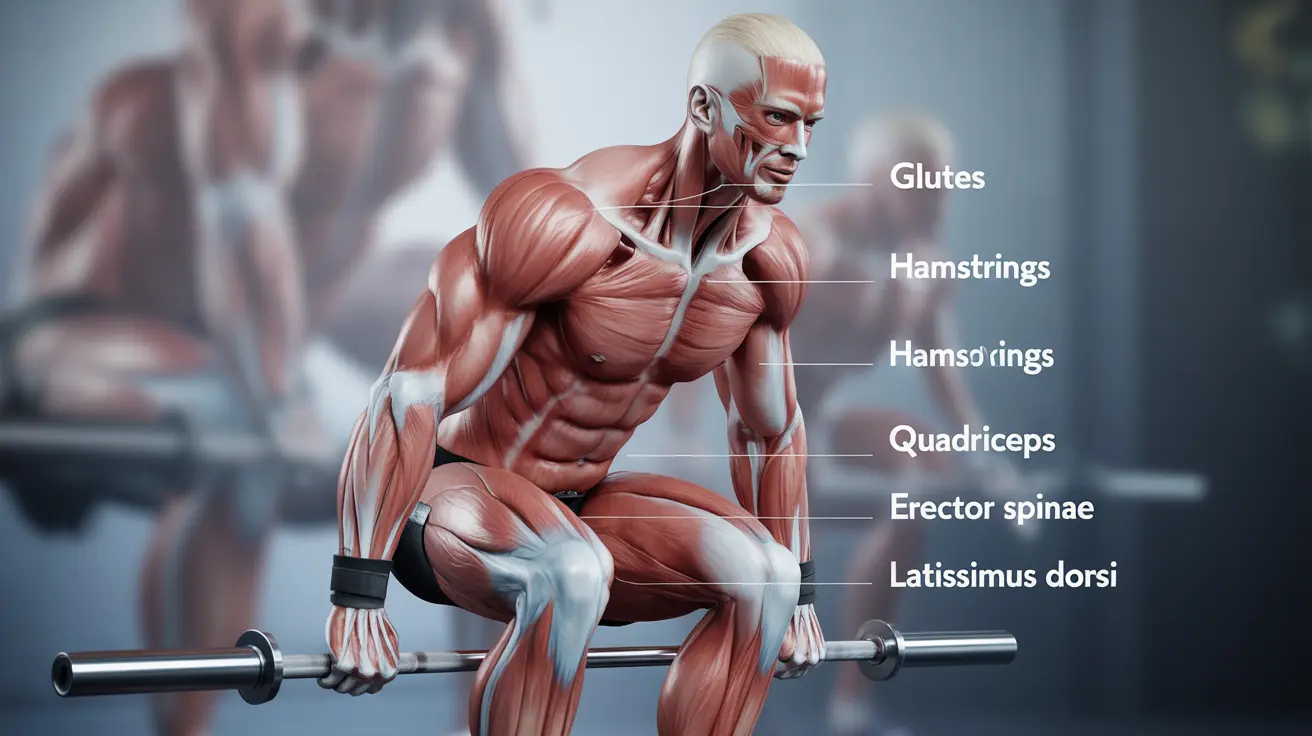The deadlift is one of the most effective compound exercises for building total-body strength and muscle. Understanding which muscles are worked during deadlifts can help you maximize your training results and ensure proper form. This comprehensive guide explores the primary muscle groups engaged during deadlifts and how they contribute to both exercise performance and daily activities.
Primary Muscle Groups Targeted in Deadlifts
Deadlifts engage multiple major muscle groups simultaneously, making them an excellent exercise for overall strength development. Here's a detailed breakdown of the primary muscles worked:
Posterior Chain Muscles
The posterior chain forms the foundation of deadlift strength and includes:
- Hamstrings
- Glutes
- Lower back muscles (erector spinae)
- Upper back muscles (latissimus dorsi)
Lower Body Power Centers
These muscles provide the explosive force needed to lift the weight:
- Quadriceps
- Calves
- Hip flexors
Core and Stabilizing Muscles
Your core muscles work to maintain proper positioning throughout the movement:
- Rectus abdominis
- Obliques
- Transverse abdominis
- Spinal stabilizers
The Role of Each Muscle Group
Back Muscles
The back muscles play a crucial role in maintaining proper spine position and controlling the weight throughout the movement. Your erector spinae helps keep your back straight, while the latissimus dorsi assists in stabilizing the weight close to your body.
Leg and Hip Muscles
The powerful leg and hip muscles generate most of the force needed to perform a deadlift:
- Glutes: Primary hip extensors
- Hamstrings: Support hip extension and knee flexion
- Quadriceps: Assist in knee extension
- Hip flexors: Help maintain proper hip positioning
Core Engagement
Your core muscles work as stabilizers during deadlifts, preventing unwanted spine movement and protecting your lower back. This strong core engagement transfers to improved stability in daily activities.
Functional Benefits and Applications
The multi-muscle engagement in deadlifts provides several functional benefits:
- Improved posture
- Better lifting mechanics for daily tasks
- Enhanced overall strength
- Increased muscle mass
- Greater core stability
Frequently Asked Questions
What are the primary muscles worked during a deadlift and how do they contribute to the movement?
The primary muscles worked during deadlifts include the glutes, hamstrings, quadriceps, and entire back chain. The glutes and hamstrings generate hip extension force, while the quadriceps assist with leg drive. The back muscles maintain proper spine position throughout the movement.
How do deadlifts and squats differ in terms of muscle activation and functional benefits?
While both exercises work similar muscle groups, deadlifts emphasize posterior chain development (back, glutes, hamstrings) more than squats. Squats place greater emphasis on quadriceps activation and require more knee flexion, while deadlifts focus more on hip hinge mechanics.
Why is core and lower back strength important when performing deadlifts?
Core and lower back strength are crucial for maintaining proper spine position during deadlifts, preventing injury, and ensuring efficient force transfer. These muscles act as stabilizers, protecting your spine while allowing you to generate maximum power through your legs and hips.
How often should deadlifts be performed for optimal muscle development and injury prevention?
Most individuals should perform deadlifts 1-2 times per week, allowing adequate recovery between sessions. Beginners might start with once weekly, while more advanced lifters might handle twice weekly sessions with proper programming and recovery protocols.
Can deadlifts help improve daily activities that involve lifting objects, and which muscles support this?
Yes, deadlifts directly improve your ability to perform daily lifting tasks. The posterior chain muscles developed through deadlifts—including the back, glutes, and hamstrings—are the same muscles used when lifting objects in daily life. This carryover makes deadlifts highly functional for everyday activities.




